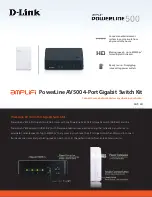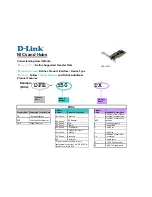
TELEPHONE INTERFACE MODULE (TIM)
14-4
14.1.8 TRANSMIT AUDIO
The transmit audio from the PCM channel stream
is processed to analog and sent to the telephone line
(see Figure 14-14). The functional paths of the
transmit audio are:
1. Voice Path
The transmit voice is processed from the PCM
channel stream by the same CODEC and time slot
determination circuitry as in the receive audio voice
path section above. The digitized voice is converted
to analog and filtered by the CODEC to a high pass
filter to eliminate low frequency audio. The audio
is level adjusted by an amplifier buffer and gated
into a summing amplifier buffer. The audio gating
provides on/off control of the voice audio to the
telephone line. The summing buffer has a level
adjustment to set the outgoing line level and drives
the unbalanced side of the telephone line hybrid.
2. Mobile Speech Detection
The audio for mobile speech detection comes from
the CODEC amplifier buffer. The bandpass filter is
centered at the audio frequency recognized for
voice peaks. The filtered audio is rectified and
detected for the presence of voice. The output of the
detector is an input to the logic unit.
3. DTMF Generation
The DTMF signaling is generated on the TIM and
transmitted toward the telephone line. The logic
unit provides the inputs to the DTMF generation
circuit. The generator outputs the desired tones and
is adjusted to the proper level with respect to the
voice path by an amplifier. The tones pass through
a logic unit controlled audio transmission gate,
summing amplifier buffer, to the telephone line.
14.2 4-WIRE E&M INTERFACE DESCRIPTION
The 4-Wire E&M Interface Card connects the
Switch with a 4-Wire audio circuit that supports Ear
and Mouth (E&M) signaling.
14.2.1 AUDIO
The audio circuit consists of a transmit (Tx) pair
and a receive (Rx) pair. The Tx pair transmits audio
and DTMF digits. The Rx pair receives audio and
DTMF digits. Dial Tone detection is also supported
by the Rx pair.
14.2.2 E&M LEADS
The E&M leads can be configured for Type I, II,
III, IV and V signaling by changing S201 on the
personality card (see Figure 14-21).
The E-Lead is a single input that monitors for -
48V, or ground. This lead is used to detect inbound
ringing (detected as battery reversals), receive pulse
dialed digits (detected as battery reversals), wink start
pulse (detected as a single battery reversal), and an
answer or hang-up by the connected circuit (detected
as a lead reversal). This lead can be set up for -48V or
ground idle states by changing S201, section 7 and 8.
The M-Lead is a single output that signals to the
connected circuit with -48V, or ground. This lead is
used to request service (battery reversal), send a wink
start pulse (battery reversal), signal a hang-up or
answer to the circuit (battery reversal), transmit pulse
dial digits (sent as battery reversals). The state of this
lead is configured by S201, section 1 through 6.
NOTE: If this card is connected to a 2-Wire circuit, a
Termset is required. This card supports pulse dialing
for both inbound and outbound. Pulse dialing is
described as full battery reversal, not click detection
from the Central Office (CO). If click detection is
required, an external device is needed to support this
feature.
The E&M Interface Card installation instructions
are not for a specific installation because of the many
unique configurations. The field engineer customizes
or alters the installation for the appropriate interface
requirements.
Summary of Contents for 3000 SERIES
Page 2: ......
Page 12: ...TABLE OF CONTENTS viii TABLE OF CONTENTS CONT D This page intentionally left blank ...
Page 20: ...3000 SERIES SWITCH 2 6 This page intentionally left blank ...
Page 26: ...ARCHITECTURE 3 6 This page intentionally left blank ...
Page 58: ...CALL PROCESSOR 5 4 This page intentionally left blank ...
Page 76: ...BASIC BOARD MODULE BBM 7 14 This page intentionally left blank ...
Page 83: ...CHANNEL INTERFACE MODULE CIM 8 7 Figure 8 3 SUMMATION BOARD ALIGNMENT POINTS DIAGRAM ...
Page 84: ...CHANNEL INTERFACE MODULE CIM 8 8 This page intentionally left blank ...
Page 88: ...CONVENTIONAL CHANNEL MODULE CCM 9 12 This page intentionally left blank ...
Page 92: ...DISPATCH CHANNEL MODULE DCM 10 4 This page intentionally left blank ...
Page 100: ...DISPATCH INTERFACE MODULE DIM 11 8 This page intentionally left blank ...
Page 142: ...TELEPHONE INTERFACE MODULE TIM 14 32 This page intentionally left blank ...
Page 146: ...VOTER DIAGNOSTICS MODULE VDM 15 4 This page intentionally left blank ...
Page 156: ...VOICE TONE MODULE VTM 18 4 This page intentionally left blank ...
Page 164: ...WIDE AREA MODULE WAM 19 8 This page intentionally left blank ...
Page 174: ...CONVENTIONAL PATCH MODULE CPM 21 4 This page intentionally left blank ...
Page 178: ...POWER SUPPLY 22 4 Figure 22 6 POWER SUPPLY DRAWER ...
Page 196: ...INTERCOM 24 2 This page intentionally left blank ...
Page 200: ...ERROR MESSAGES A 4 This page intentionally left blank ...
Page 214: ...Part Number 001 3139 005 10 03 Printed in U S A ...
















































